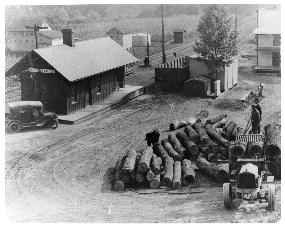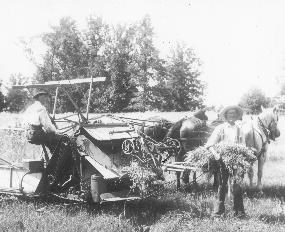
NPS Collection While a love of agriculture has remained constant among valley farmers, farming methods continuously change through time. As technology advanced, farming became more profitable and less labor intensive. Farmers could plow extra fields, sell more products, and have more time for other jobs. With newer tractors and farming equipment, the market economy came to the farm. While families earned more money from their crops and livestock, they needed loans from banks to pay for the new technology. The local farm emerged from isolation as nationwide food and supply networks developed and dictated the choices of many farmers. 
Courtesy / Bath Township Historical Society Technology AdvancesFarming in the Cuyahoga Valley began as early as 2,800 years ago, during the Woodland Period. Indigenous peoples of the Late Prehistoric (1,100 - 400 years ago) Whittlesey culture, brought the first true maize farming to the region. They farmed corn, beans, and squash by clearing trees and underbrush, and then burning debris to replenish the soil. |
Last updated: December 20, 2021
